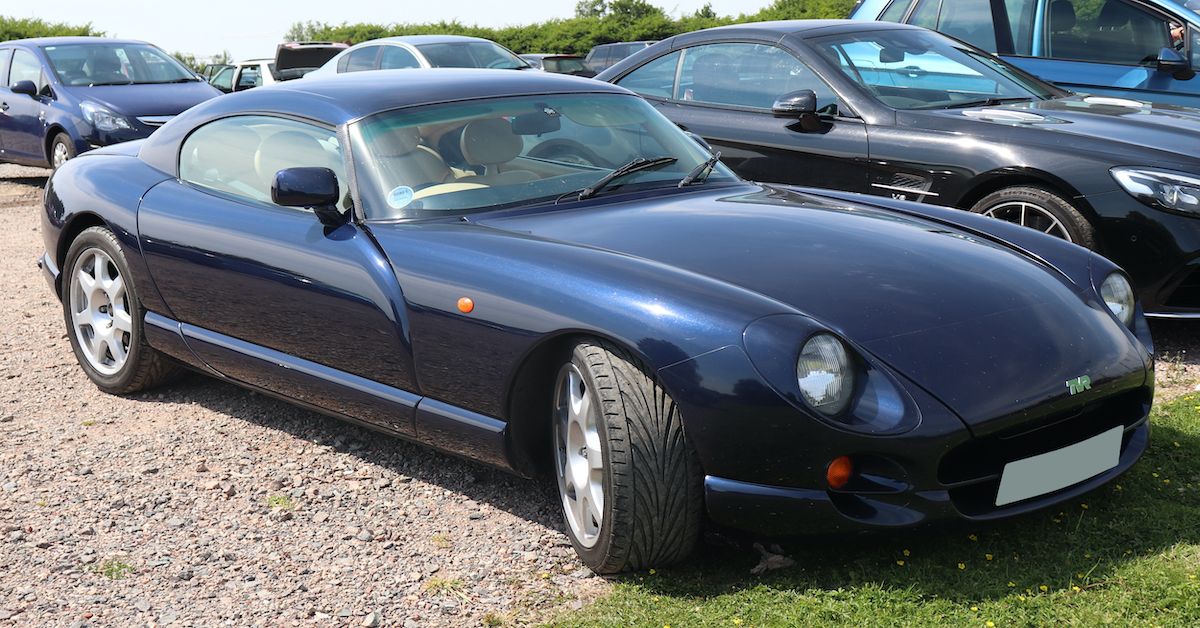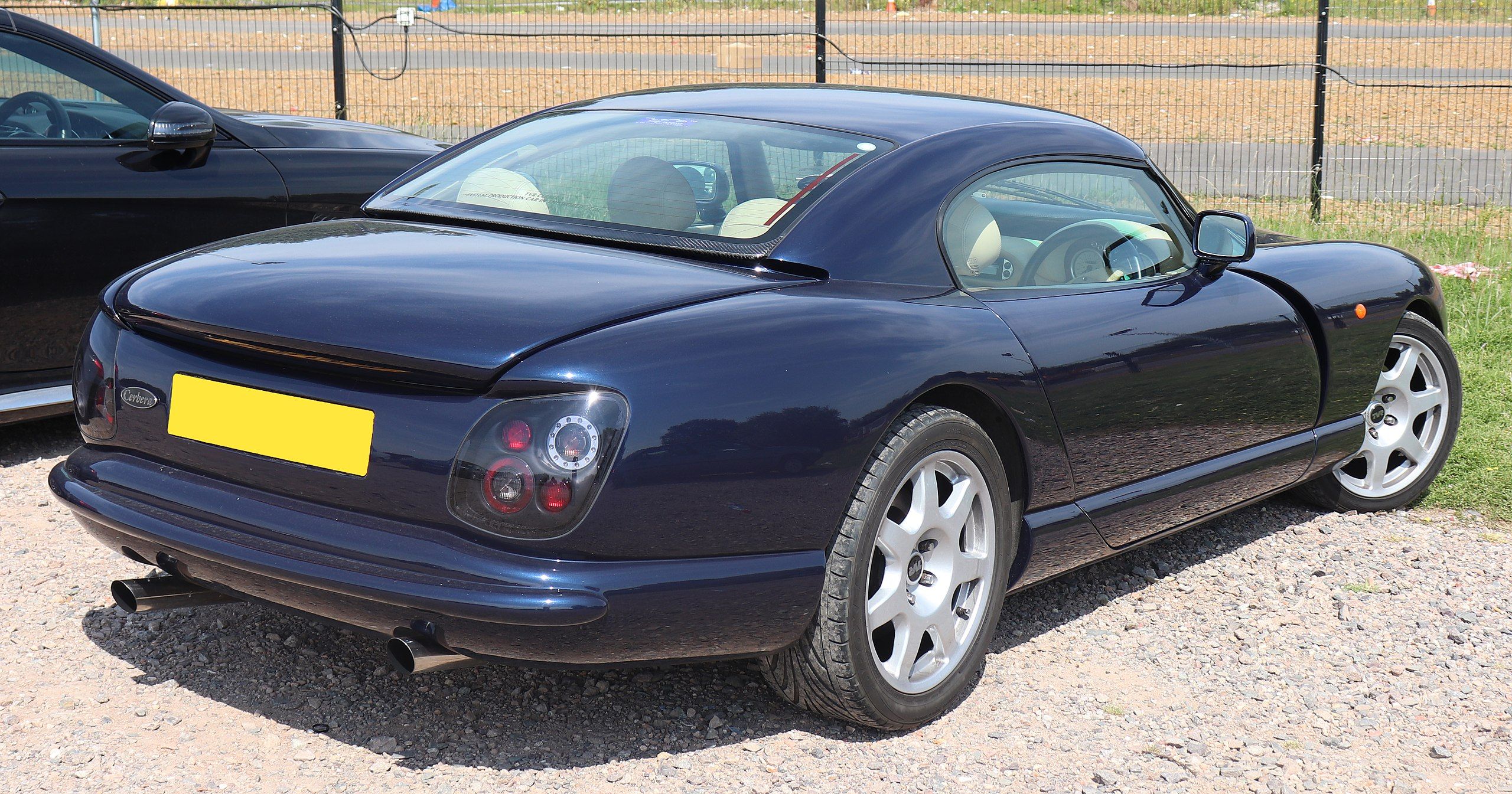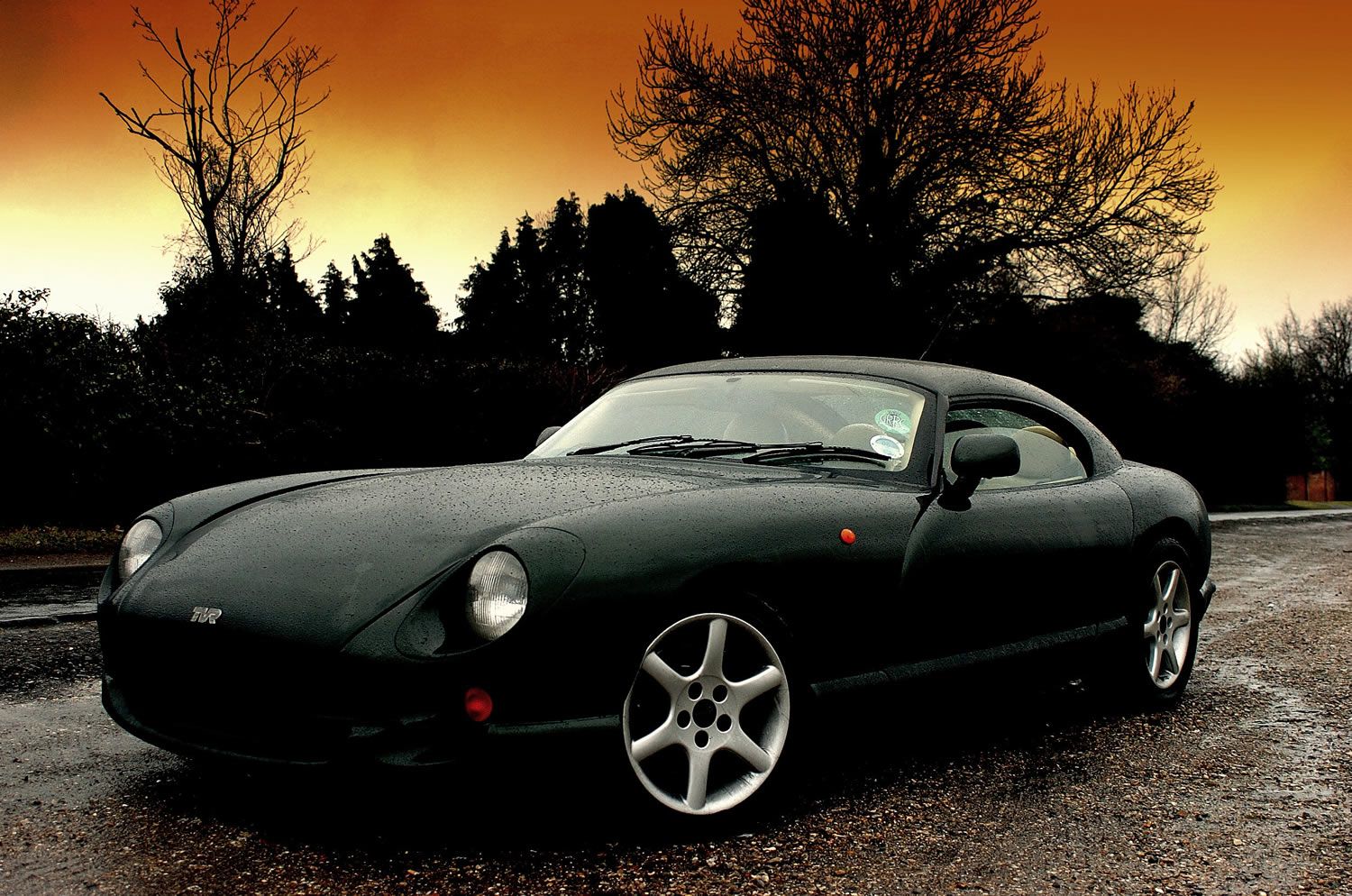Some manufacturers stand out for their cars with mass appeal. Ones that are perfectly suited to families or those looking for sensible daily drivers. Then there are others, like TVR, who completely go against the grain, forgoing things like practicality and subtlety for something more exciting. Something far bolder. And it's cars like the Cerbera which epitomize that approach.
The Cerbera was an important car for TVR for many different reasons. Chief among them, though, was the fact that it was the first car to receive in-house developed engines. You see, prior to this, TVR's engines were sourced from companies such as Ford and Rover, then fettled to squeeze as much power out of them as possible. But TVR started doing this completely on its own terms with the introduction of the Cerbera, developing and fine-tuning the engines in accordance with its TVR Tuscan race series.
And it wasn't just the engine that made the Cerbera stand out, either. Its looks, noise, and interior, were, as always with TVR, serious talking points. So, on that note, let's take a closer look at the Cerbera and find out what its best feature is.
A Detailed Look At The History Behind The TVR Cerbera
TVR has always been a company that has made out-there cars, in every sense of the word. You had the likes of those wedge-shaped vehicles from the ‘80s — think the 450 SEAC or the Tamsin — that punched way above their weight, going toe to toe with the very best that there was on offer. Then, of course, you had the likes of the Griffith, which was super lightweight, fast, and brilliantly styled. Really, you could keep listing cars here.
But, throughout the early nineties, TVR began working on something that would take things up a notch, something that would look and perform like a supercar at a fraction of a cost. And that was indeed the Cerbera. The car was first introduced at the London Motor Show in 1993, though it wouldn’t go on sale until three years later. During that time, orders started flooding in fast, and it wasn’t difficult to understand why — it had a fiberglass body, making it exceptionally lightweight, looks that were seriously handsome, and a big, muscular V8 under its bonnet.
The Cerbera was essentially a bigger, more powerful version of the Chimaera, with room in the back for two — though according to many sources, actually fitting someone in the back would require a small miracle. The name, much like the Chimaera before it, was inspired by a mythical beast, which was something that suited to the Cerbera’s aggressive character perfectly.
Here's The Best Feature Of The TVR Cerbera
Picking the best feature of the TVR Cerbera isn’t exactly the easiest feat, given just how great it looks and how out-there that interior is. The looks, for starters, represent the perfect balance between aggression and refinement and actually showcase one of the more reserved cars drawn up by TVR — especially when placed alongside the psychedelic Tuscan or the other-worldly Sagaris.
Then there’s the inside, which is quintessential TVR: bespoke dials, cocoon-like swathes of leather, and chrome accents throughout. All of this is brilliant and could only have been penned up by TVR, but the greatest feature has to go to that engine.
As previously mentioned, the Cerbera marked a step in a completely new direction for TVR: engine production. According to Evo, for a company as small as TVR to take this plunge and pass through all the legislative hoops associated with it is extraordinary in its own right, let alone how well it made the Cerbera move.
The initial cars came with a 4.2-liter, racecar-like V8 — codenamed the Speed Eight, or AJP — which developed 360 bhp and 320 lb-ft of torque. Enough, then, to take the TVR from 0-60 in around 4.5 seconds and max out at 180 mph. The engine was mated to a five-speed Borg-Warner transmission, with power controlled at the back wheels via a limited-slip differential — though traction control wasn’t present, as was typical of TVR.
TVR didn’t decide to just stop there with the Speed Eight, though, with displacement increased to 4.5-liters in 1997. Power jumped to a staggering 420 bhp, and torque was increased to 380 lb-ft, meaning the Cerbera could now hit sixty in under four seconds and top out at 185 mph.
Those figures are impressive today, let alone for 1997. This put TVR up there with the very best, though nothing could come close to the Cerbera for the money. You had a car with true supercar looks and performance for the cost of an executive saloon. There was also a third engine introduced in 1996 — codenamed the Speed Six — a straight-six, 3996cc unit that developed 350 bhp and allowed the Cerbera to hit sixty in 4.5 seconds.
The craziest version of the Cerbera would almost come to fruition in 2000: the Speed Twelve. As the name would suggest, this involved two Speed Six engines mated together to create a V12. The car was eventually scrapped, though, as it was simply too quick and dangerous to be released to the public — so much so, in fact, that even professional drivers were struggling to keep it under control.
Like with every TVR, though, maintenance and repair costs are something you need to keep on top of with a Cerbera. If you’re looking to buy one, it’s wise to ensure you find an example that’s been well looked after and you have a decent lump put aside for repairs.



